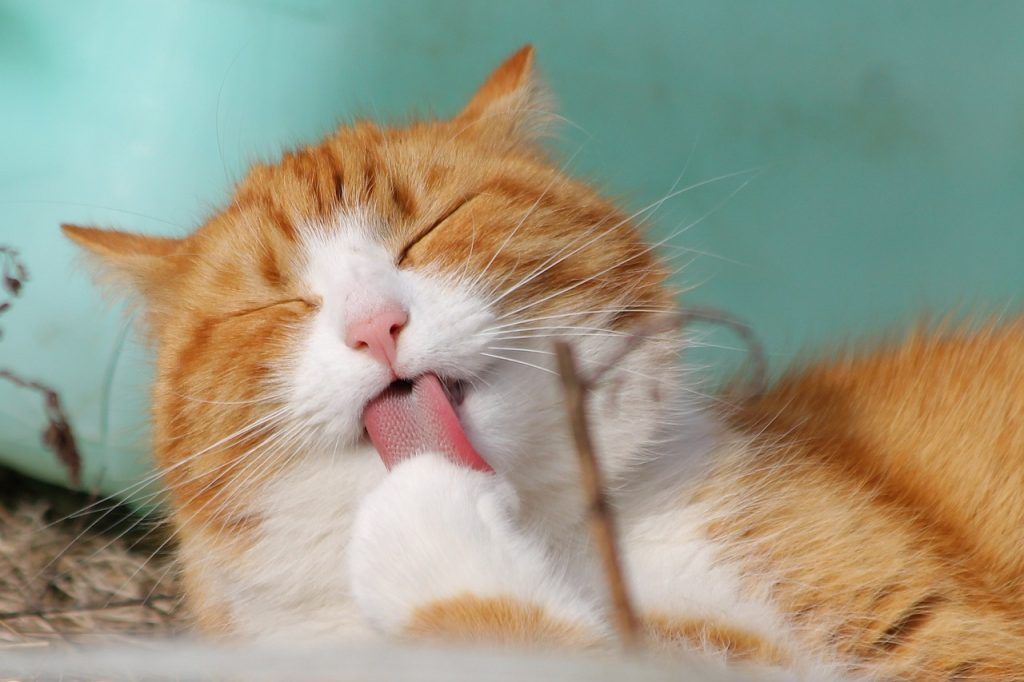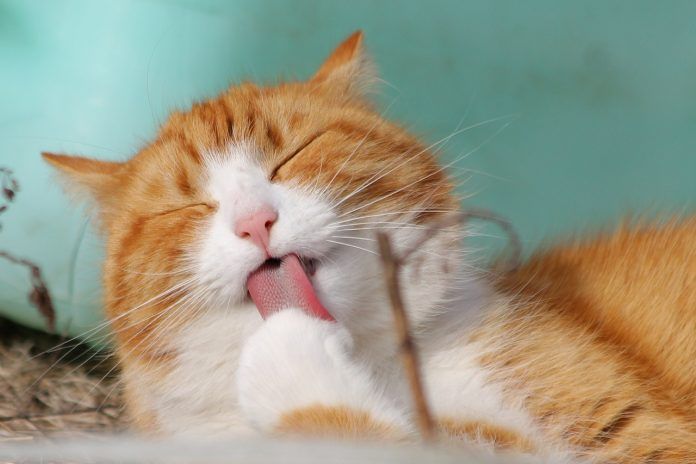Feline nutrition constantly intrigues cat owners seeking the ideal diet for their pet’s needs. As more human superfoods like beans gain prominence, cat caregivers wonder if these plant-based foods bring benefits or risks when introduced to cats. Cats’ ancestral carnivorous nature seems at odds with modern trends toward omnivorous versatility.
This article dives into the science and nuances surrounding beans and cats – from nutritional composition to preparation methods, health impacts, and expert perspectives. By better understanding cats’ dietary requirements, owners can make informed decisions about incorporating items like beans.

Nutritional Needs of Cats
As obligate carnivores, cats have specific nutritional adaptations geared for meat-eating. Their bodies require high amounts of protein, fat and essential amino acids only found in animal flesh. Taurine, arginine, vitamins A and B12 must come from meat sources. Cats also need more calcium and phosphorus than plant-eating mammals. While small amounts of produce can supplement feline diets, meat provides complete nutrition for cats to thrive. Beans and legumes supply protein, but lack the bioavailability and amino acid balance cats’ bodies require.
Types of Beans
Beans encompass a wide variety of edible legumes packed with fiber, protein, carbohydrates and micronutrients. Common varieties include navy beans, black beans, garbanzos, lentils, peas and soybeans. Each type carries slightly different nutritional values, though protein content ranges between 7-15 grams per cooked cup. Beans supply iron, magnesium, potassium and folate. However, the protein quality is considered lower than meat due to incomplete amino acid profiles. Before incorporating into cat diets, bean’s composition warrants evaluation.
Cats’ Natural Diet
Throughout evolution as solitary hunters, cats developed specialized digestive systems to derive nutrients from consuming fresh prey. Their short intestinal tracts rapidly absorb essential amino acids from animal flesh before elimination. Cats lack adaptations for efficiently digesting plant cellulose and carbohydrates. While scrap feeding may provide limited plant matter, a cat’s ideal diet consists of regular high-protein animal tissue to meet nutritional requirements. Dry commercial diets attempt to mimic this ancestral carnivorous diet. Beans lack the bioavailable protein sources best suited for cats’ natural physiology.Beans and Their Nutritional Value
Pulses like beans contain valuable nutrition for humans, providing ample protein, fiber, vitamins and minerals. But the nutritional assets of beans don’t align with cats’ bodily needs. Beans supply carbohydrates and plant-based protein less digestible for cats than animal sources. Their fiber content could irritate feline guts adapted for simple meat breakdown. While beans offer some iron and antioxidants, cats require greater amounts of fat, amino acids and bioavailable vitamins only found in animal foods. For meeting cats’ dietary needs, beans make a poor substitution for high-quality animal ingredients.
Potential Benefits of Beans for Cats
Could beans offer any potential upsides for cats if owners wish to experiment with introductions? Some speculate digestive-friendly black beans may supply trace fiber. Lentils provide iron and plant-based protein, though less usable than meat. Soybeans offer polyphenols with antioxidant effects. However, any benefits are minor compared to monitoring for adverse effects. Current evidence indicates beans provide no major known health advantages for cats substantially outweighing their risks. Most veterinary guidelines recommend avoiding legumes altogether for cats.
Risks and Concerns of Feeding Beans to Cats
While humans thrive on beans, they may pose health risks to cats better adapted to strictly animal-based proteins. Nutritional changes should always be approached cautiously. Potential issues associated with beans include:
- Digestive upset from gas-inducing sugars in beans
- Stomach cramps and diarrhea from insoluble fiber content
- Decreased absorption of taurine and arginine due to enzyme inhibitors
- Pancreatitis from increased carbohydrate load
- Mineral and electrolyte imbalances
Though less common, bean allergies can also provoke vomiting, skin irritation and respiratory issues in sensitive cats. Overall, beans offer negligible benefits contrasted by significant potential downsides for felines.
Cats’ Digestive System
Cats’ short, simple digestive tracts reflect their evolutionary meat-focused diet. Their stomachs rapidly convert animal flesh into usable nutrients. Enzymes target breaking down fats, amino acids and proteins found in prey. The quick acidic digestive process leaves little time for plant material breakdown before elimination. Beans contain complex sugars, lectins and cellulose – indigestible components. While tolerable for humans, these antinutrients overburden cats’ delicate digestive balance optimized for meat-based meals.
Preparing Beans for Cats
For owners determined to share legumes with felines, proper preparation is vital to reduce digestive adversity. Consult veterinarians before transitioning diets. When cooking beans for cats, always:
- Soak and thoroughly cook beans to remove lectins and increase digestibility
- Mash or puree beans into tiny, manageable pieces
- Avoid any seasonings, onions, garlic or salt
- Rinse canned beans to remove excess sodium
- Mix small amounts of beans into regular cat food
- Discontinue immediately if any gastrointestinal issues arise
Modifying beans supports easier tolerance, though meat proteins remain preferable for meeting cats’ nutritional health requirements.
Moderation in Feeding
As with any dietary change, moderation is key when incorporating new foods like beans. The adage “all things in small amounts” applies. Beans should comprise no more than 5-10% of a cat’s total diet at most.
For a 10 pound cat, a daily serving size should not exceed:
- 1-2 teaspoons of cooked bean pieces mixed into meals
- 1-3 licks of bean puree as an occasional treat
Gradually increase tiny servings and monitor for individual tolerance. Overfeeding beans risks nutritional imbalances, weight gain and digestive issues in cats.
Introducing Beans to Cats
Cats require gradual transitions when presented with new foods to allow their digestive system to adjust. Here are some tips for safely introducing bean ingredients:
- Start with a tiny amount like 1-2 beans or 1/8 teaspoon puree.
- Mix bean servings thoroughly into cat’s regular meals.
- Slowly increase quantity every 4-5 days if no adverse reactions occur.
- Monitor litter box habits and energy levels closely.
- Avoid giving solely beans or replacing cat’s normal diet entirely.
- If any concerning symptoms arise, discontinue beans and contact your vet.
Signs of Allergies or Intolerance
Cats communicate food dislikes or discomfort through behavioral cues. Refusing beans after initially sampling indicates an instinctual aversion. Drooling, difficulty swallowing or gagging all signal feline distaste.
Diarrhea, vomiting and loud stomach gurgling are signs beans may be indigestible. Lethargy or restlessness can accompany nausea. Even if symptoms manifest hours after feeding, they often relate to the beans.
Hairballs, constipation, aggravated dental issues or lung inflammation from ingestion during grooming also suggest poor bean digestibility. Know your cat’s usual habits to identify adverse food reactions requiring veterinary attention.
Homemade Cat Food Recipes
For owners wishing to creatively incorporate beans into cat diets, some veterinarians provide bean-inclusive food recipes balanced with additional protein and nutrients. Consider these options in strict moderation:
- Black bean brownies using eggs, turkey and cat vitamin powder
- Lentil and salmon cakes with mashed legumes, flakes and broth
- Chickpea tuna salad blending beans, flaked poultry and broth
- Soy nut butter with pureed tofu, roasted soybeans, chicken and supplements
Home cooking allows controlling ingredients, but consult professionals to ensure nutritional adequacy. Recipes should not totally replace balanced commercial cat foods.
Commercial Cat Foods with Beans
Several niche natural cat food brands offer bean-incorporated recipes. However, consumers must scrutinize labels for bean content, protein sources and nutritional balance.
Ideally seek:
- Bean extracts or bean fiber rather than whole beans
- Meat, poultry or fish listed as the first ingredient
- Maximum 20% beans mixed with quality animal proteins
- No onion, garlic or other additives toxic to cats
- Bean quantities suitable for your cat’s size and health status
Veterinarians can analyze options to greenlight safer bean-inclusive commercial foods tailored to an individual cat’s needs.
Consulting with Veterinarians
Before making any major dietary transitions, consult your veterinarian to discuss your cat’s unique nutritional considerations.
Key topics to cover include:
- Any pre-existing conditions requiring specialized diets
- Appropriate serving sizes and proportions for your cat’s profile
- Likelihood of tolerating digestion of beans
- Recommended methods for gradual introduction
- What signs during transition may indicate stopping beans
Following professional guidance can prevent adverse reactions when incorporating new foods.
Success Stories and Cautionary Tales
Cat owners report mixed experiences feeding felines beans. Some observe no issues and describe cats eagerly consuming offered beans or bean dips. Negative effects like gastrointestinal distress are frequently reported by owners after feeding beans, especially in cats with prior sensitivities. Older cats also exhibit more pronounced adverse reactions overall. Cases where descriptive warnings were ignored sadly resulted in emergency vet visits for severely sickened cats. Starting with extremely small bean amounts and watching closely for any intolerance signs remains imperative. The variable individual responses underscore the importance of an incremental transition.
Summary: Beans in the Feline Diet
In summary, most evidence indicates beans provide minimal health benefits for cats but may pose risks ranging from nutritional imbalances to potentially life-threatening allergies or intestinal issues if introduced irresponsibly. While tiny portions of legumes infrequently may be stomached by some cats, they supply no complete nutrition unmet by quality meat-based cat foods. Avoidance is recommenced as the safest approach. For those attempting bean integration through recipes or commercial foods, gradual transitions and vigilant monitoring of cats’ reactions is critical. Consult veterinarians to tailor any dietary changes to your individual cat.
Addressing Common Myths
Misinformation around cats and beans abounds, including false claims like:
- Myth: Beans offer essential protein for cats. Fact: Beans lack proteins cats require. Meat is ideal.
- Myth: Beans provide missing nutrients in meat diets. Fact: Meat supplies all nutrients cats need.
- Myth: Dry beans are safe for cats. Fact: Unsoaked beans contain lectins cats cannot digest.
- Myth: Cats can self-regulate bean consumption. Fact: Cats will overeat beans out of curiosity to the point of illness.
Getting sound guidance is key to avoid potentially dangerous misconceptions and make educated decisions.
The Evolving Understanding of Feline Nutrition
Scientific knowledge of cat nutritional needs continually develops over time. Current research affirms cats thrive on high-protein, low-carb animal-based diets. Future studies may further illuminate the impacts of periodic non-meat additions like beans. However, beans lack any known essential benefits for cats deeming them advisable at this time. Caution is still warranted. As research progresses, best practices will evolve to optimize feline well-being. Monitoring emerging evidence allows cat owners to make choices aligned with the latest nutritional wisdom.
The fascination with incorporating human superfoods like beans into feline diets is understandable. However, a cat’s wellbeing must take priority based on their biological needs. Cat guardians have an ethical obligation to understand cats’ limited ability to digest and derive nutrients from plant matter like beans. While the occasional nibble may satisfy some cats’ curiosity without issue, considerable risks exist, especially with irresponsible exposure. By consulting professionals and experts, cat owners can avoid trendy fads and instead nurture their felines with optimal care and nutrition. With vigilance, cats and beans may be able to peacefully coexist.

